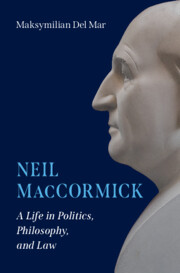Refine search
Actions for selected content:
372 results
Contextualising multimorbidity in people who use drugs: analysis of drug-death decedents in Scotland
-
- Journal:
- Irish Journal of Psychological Medicine , First View
- Published online by Cambridge University Press:
- 12 December 2025, pp. 1-9
-
- Article
-
- You have access
- Open access
- HTML
- Export citation
Chapter 18 - Devolution, Nationalism, and the Rhetoric of Independence
- from Part V - The People Now
-
-
- Book:
- 'The People' and British Literature
- Published online:
- 11 December 2025
- Print publication:
- 11 December 2025, pp 293-305
-
- Chapter
- Export citation
THE SCOTTISH FISCAL FRAMEWORK: PAST, PRESENT, AND FUTURE
-
- Journal:
- National Institute Economic Review ,
- Published online by Cambridge University Press:
- 11 December 2025, pp. 1-6
-
- Article
-
- You have access
- Open access
- HTML
- Export citation
Chapter 10 - Creating the People
- from Part III - ‘One of Us’
-
-
- Book:
- 'The People' and British Literature
- Published online:
- 11 December 2025
- Print publication:
- 11 December 2025, pp 159-174
-
- Chapter
- Export citation
1 - Events, Personalities and Reputations
- from Part I - Chronology and Context
-
-
- Book:
- The Cambridge Companion to Late Medieval English Kingship
- Published online:
- 03 November 2025
- Print publication:
- 20 November 2025, pp 3-23
-
- Chapter
- Export citation
15 - The King’s Subjects beyond the Realm
- from Part III - The King and His Subjects
-
-
- Book:
- The Cambridge Companion to Late Medieval English Kingship
- Published online:
- 03 November 2025
- Print publication:
- 20 November 2025, pp 298-320
-
- Chapter
- Export citation
Wha’s like us? The desecuritisation of migration as ontological security-seeking in Scotland
-
- Journal:
- Review of International Studies , First View
- Published online by Cambridge University Press:
- 07 November 2025, pp. 1-21
-
- Article
-
- You have access
- Open access
- HTML
- Export citation
9 - Wardship and the Wars of the Three Kingdoms
-
- Book:
- Institutional Change and Property Rights before the Industrial Revolution
- Published online:
- 23 October 2025
- Print publication:
- 06 November 2025, pp 199-228
-
- Chapter
- Export citation
25 - Networks, Coalitions and Language Change
- from Part III - Ideology, Society and the History of English
-
-
- Book:
- The New Cambridge History of the English Language
- Published online:
- 23 October 2025
- Print publication:
- 23 October 2025, pp 725-750
-
- Chapter
- Export citation
1 - Source Studies
-
- Book:
- Donizetti: Lucia di Lammermoor
- Published online:
- 06 November 2025
- Print publication:
- 23 October 2025, pp 1-33
-
- Chapter
- Export citation

The Recognition of Sovereignty
- Politics of Empire in Early Anglo-Scottish Literature
-
- Published online:
- 09 October 2025
- Print publication:
- 23 October 2025
Chapter 13 - England
- from The Nordic World and the British Isles
-
-
- Book:
- The Cambridge Guide to Global Medieval Travel Writing
- Published online:
- 03 October 2025
- Print publication:
- 02 October 2025, pp 237-252
-
- Chapter
- Export citation
4 - Huddersfield 1959
-
- Book:
- Dreams and Songs to Sing
- Published online:
- 07 August 2025
- Print publication:
- 07 August 2025, pp 56-72
-
- Chapter
- Export citation
1 - The Acquisition of Scottish Gaelic: Sociolinguistic and Policy Dimensions
- from Part I - The Socio-educational Context
-
-
- Book:
- The Acquisition of Celtic Languages
- Published online:
- 03 July 2025
- Print publication:
- 10 July 2025, pp 11-28
-
- Chapter
- Export citation
1 - Scottish Home Rule
-
- Book:
- Neil MacCormick
- Published online:
- 22 May 2025
- Print publication:
- 12 June 2025, pp 18-76
-
- Chapter
-
- You have access
- HTML
- Export citation
7 - A Philosophically Credible Nationalism?
-
- Book:
- Neil MacCormick
- Published online:
- 22 May 2025
- Print publication:
- 12 June 2025, pp 301-360
-
- Chapter
- Export citation

Neil MacCormick
- A Life in Politics, Philosophy, and Law
-
- Published online:
- 22 May 2025
- Print publication:
- 12 June 2025
Chapter 3 - Great Britain and Ireland
- from Part I - Life and Death
-
-
- Book:
- Percy Shelley in Context
- Published online:
- 17 April 2025
- Print publication:
- 24 April 2025, pp 18-25
-
- Chapter
- Export citation
10 - Minority Languages as Collateral Damage in the Climate Crisis: The Incidental Result of Ecoviolence on Y Gymraeg/Welsh Language
-
-
- Book:
- Ecoviolence Studies
- Published online:
- 13 February 2025
- Print publication:
- 20 February 2025, pp 170-182
-
- Chapter
- Export citation
7 - Educational Reform in Scotland
-
-
- Book:
- Politics and Knowledge Shaping Educational Reform
- Published online:
- 06 February 2025
- Print publication:
- 13 February 2025, pp 99-114
-
- Chapter
- Export citation
